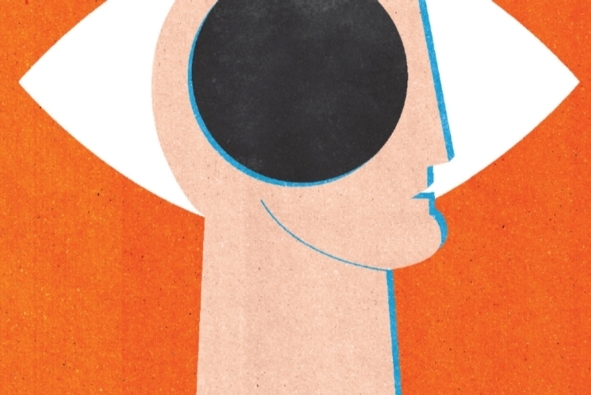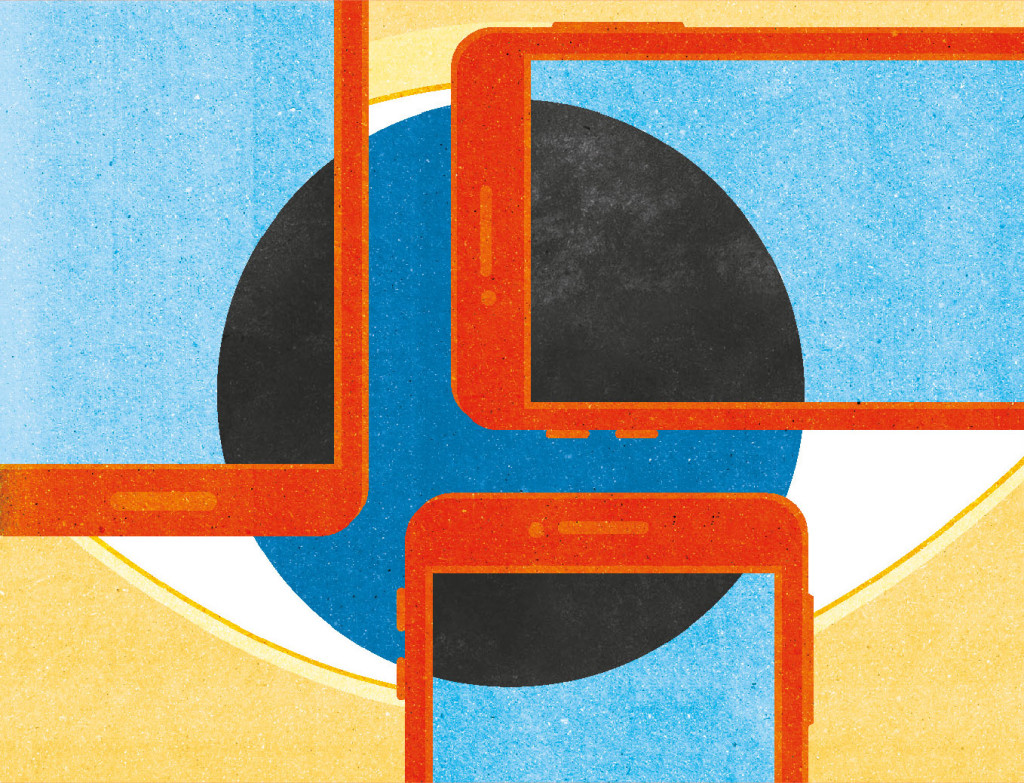By Carol W. Berman
Published in Scientific American™ May 1, 2016

“You don’t understand, doctor,” he said pleadingly. “It’s driving me crazy. When I try to study, that spot blacks out whatever I’m reading or looking at. When I’m using my iPhone, I can hardly focus because the spot is there. I feel like ripping my hair out.”
Eric* had consulted three ophthalmologists before he came to see me. This third-year medical student, dressed in jeans and an oxford, button-down blue shirt, looked typical in every way except for his spiky blond hair. Usually medical students don’t get into extreme fashion in hair or dress. But what distinguished Eric the most, besides his hair, was the look of distress on his pale face. We sat across from each other in my small office on Manhattan’s Upper West Side. “My parents are so angry at me because I’m flunking out! And I’ll tell you why. Right now, as I’m looking at you, I see a large, black spot over your face,” he said, squinting a little. (*Not his real name.)
“Is it a floater?” I asked. I happened to have one of those annoying specks in my own eye. I was looking at him through mine, a new problem that had just developed. What synchronicity.
“Yes, but it’s not an ordinary one,” he insisted. “It’s gigantic and obscuring the vision in my left eye!” I told him I was sorry to hear about this problem and asked him what the doctors had advised. I thought visiting three ophthalmologists as he had done was a little much (one long, unpleasant exam had been more than enough for me), but I reserved judgment about Eric until I heard his full story.
The doctors, it turned out, had told him to wait it out. “I heard that they usually disappear on their own, especially at your age,” I said, hoping that would be the case with mine, too.
“You don’t understand, doctor,” he said pleadingly, “It’s driving me crazy. When I try to study, that spot blacks out whatever I’m reading or looking at. When I’m using my iPhone, I can hardly focus because the spot is there. I feel like ripping my hair out,” he said, touching his head. Now I understood the spiky locks—it wasn’t just a fashion statement. I began to wonder if he had trichotillomania, an obsessive-compulsive condition in which patients pull out their hair.
As we continued to talk, it became clear that Eric’s problem had begun well before the floater appeared. He admitted to being “obsessed” with the black spot, but before that he had been firmly fixated on his cell phone. “I used to look at my phone all the time—now I have to look at that stupid spot. You must understand. It’s separating me from my phone.”
This caught my attention. Many people, perhaps most of us, are obsessed with our electronic devices these days, but for this poor man, the preoccupation had apparently crossed over into the realm of pathology.

Surveys in both the U.S. and the U.K. have shown that about 70 percent of young adults feel so attached to their phone that they admit to feeling anxiety or even panic when they are separated from it. They seem to view the device as an extension of themselves. Wikipedia even has a new term called “nomophobia,” which means fear of being out of cell-phone contact.
A number of articles have been published in the popular press about smartphone obsession, although the phenomenon is only just beginning to draw the attention of researchers. One study conducted at the University of Missouri and published last year in the Journal of Computer-Mediated Communication involved 41 young people solving word puzzles with and without their smartphone by their side. It found that when the subjects were separated from their phone, their heart rate and blood pressure rose significantly, along with feelings of anxiety. They also did a poorer job solving the puzzles when parted from their precious phones.
If nomophobia is more or less normal, how does one distinguish it from a pathological obsession? For clinicians like me, the true test of whether mental illness is present is the degree to which the individual’s daily life is impaired. In Eric’s case, there was no question. Before the floater had appeared, he said he had been glued to his smartphone night and day and could hardly pry himself away to study, eat and sleep. When the floater appeared, he switched his obsessions and compulsions to that black spot.
Eric had all the symptoms to make a diagnosis of obsessive-compulsive disorder (OCD), according to the DSM-5—the Diagnostic and Statistical Manual of Mental Disorders. The fact that his obsession with his cell phone was almost typical behavior for his generation had essentially masked his disorder.
While he might have been able to rationalize a cell-phone fixation, he knew his obsession with the black spot was ridiculous. And it was taking a serious toll. “I failed my last biochemistry test because I couldn’t concentrate with that black spot in front of me,” he told me. The dean had warned him that if he failed one more exam, he would have to drop out or repeat that year of medical school. “I know the floater is just a chunk of vitreous matter that broke off from my eyeball,” he lamented, “but I can’t stand it! It’s ruining my life!”
Given his misery and the threat to his academic standing, we needed to act quickly. Cognitive-behavioral therapy and other psychotherapies have been found to be effective for OCD, but as a psychopharmacologist, I knew I could relieve Eric of his obsessions and compulsions quickly and effectively with medication. I immediately suggested treatment with sertraline, a selective serotonin reuptake inhibitor that is perhaps better known by its brand name, Zoloft. I have treated dozens of OCD patients with this medication, with generally good results.
I explained to Eric that we believe that OCD involves a dysregulation of the neurotransmitter serotonin and that sertraline increases serotonin in brain cell synapses, relieving the symptoms. I told him that we would start at 25 milligrams daily and gradually increase to a fairly high amount—because OCD usually remits only with dosages above 200 mg. It would take about four weeks to kick in.
Eric agreed to the treatment but expressed concern about side effects—especially on sexual function. “My friend took sertraline, and he couldn’t have an orgasm,” he noted. “Will that happen to me? My girlfriend will freak out. I don’t want that problem, too.”
I told him we would deal with that issue if it occurred. We could, for instance, add another medicine to counteract the side effect. But sexual dysfunction was the least of his concerns now. I had to get him better quickly before he flunked out.
It took five weeks for the sertraline to work, and Eric called me every other day, complaining about side effects of nausea, diarrhea and some memory problems. This kind of relentless, fretful behavior is common in patients with obsessive-compulsive disorder.
Fortunately, he didn’t experience sexual dysfunction. We had to increase his dosage to 500 mg a day, a fairly large amount that his insurance company initially balked at. Thankfully, the sertraline worked, the side effects eased up, and Eric was able to concentrate and pass his exams.
Eric continues to be my patient to this day, but he only has to visit me for medication checkups a few times a year. As for the floater, it eventually disappeared. But in a sense, it had served Eric well: it was the black spot that brought his condition to light.
